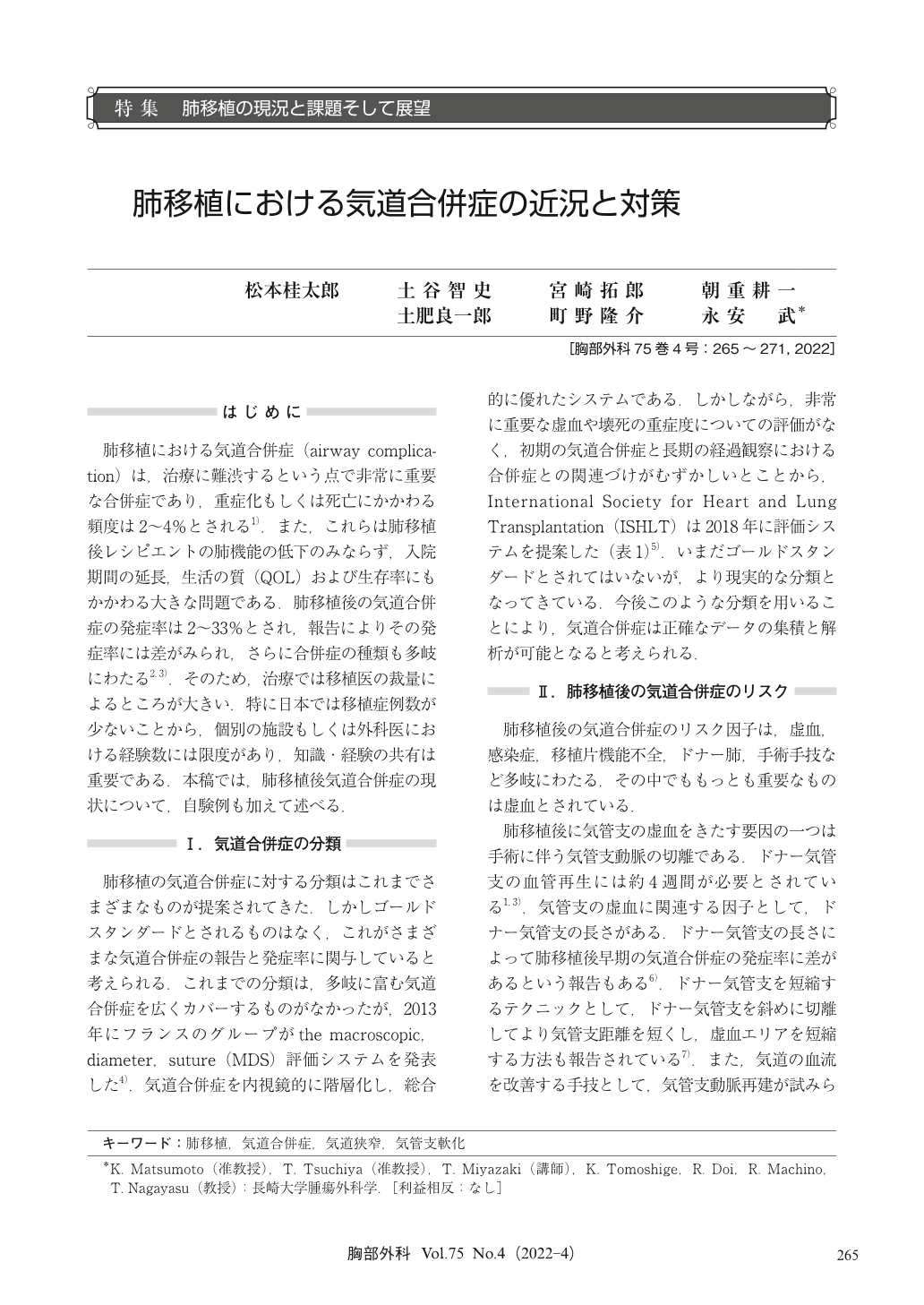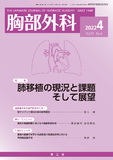Japanese
English
- 有料閲覧
- Abstract 文献概要
- 1ページ目 Look Inside
- 参考文献 Reference
肺移植における気道合併症(airway complication)は,治療に難渋するという点で非常に重要な合併症であり,重症化もしくは死亡にかかわる頻度は2~4%とされる1).また,これらは肺移植後レシピエントの肺機能の低下のみならず,入院期間の延長,生活の質(QOL)および生存率にもかかわる大きな問題である.肺移植後の気道合併症の発症率は2~33%とされ,報告によりその発症率には差がみられ,さらに合併症の種類も多岐にわたる2,3).そのため,治療では移植医の裁量によるところが大きい.特に日本では移植症例数が少ないことから,個別の施設もしくは外科医における経験数には限度があり,知識・経験の共有は重要である.本稿では,肺移植後気道合併症の現状について,自験例も加えて述べる.
Lung transplantation is the only option for patients with end-stage pulmonary diseases. During recent years, satisfactory results in terms of long-term survival and quality of life have been achieved with improvements in perioperative management, surgical technique, and immunosuppression. Airway complications after lung transplantation are associated with significant morbidity and mortality. Common airway complications after lung transplantation include anastomotic granulation, airway stenosis, bronchomalacia, fistulas, and anastomotic infection. These airway complications often result in repeated hospitalisations and interventions. If bronchoscopic interventions are not effective, other alternatives like surgical intervention or re-transplantation become necessary. While numerous strategies for airway complications have been proven effective, there are still some issues that to be solved. Further research is necessary to reduce mortality and improve quality of life of these patients.

© Nankodo Co., Ltd., 2022


